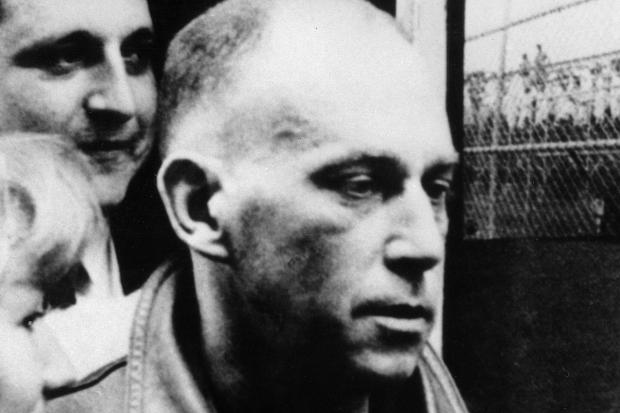(A review of ‘Chris Marker, 1921 – 2012: The Memory of the Image’, The Horse Hospital, London, October 21st 2012)
The irreconcilable tensions between memory and history much exercised the French filmmaker Chris Marker, who died this August, a day after his ninety-first birthday. Marker’s death was little remarked on at the time by a British media binging on the Olympics, so it was perhaps fitting that the day-long celebration of his work held towards the end of October at The Horse Hospital – a troglodytic space behind Russell Square underground station – included a rare screening of The Koumiko Mystery (1965), Marker’s portrait of a young Japanese woman adrift in Tokyo during 1964 Olympiad.
The event – itself something of a marathon, running for nearly twelve hours – was organised by the curator Gareth Evans and the noted Markevian, Chris Darke, whose film portrait from 1999 formed part of a diverse programme that served to demonstrate his range and scope, including both work created by Marker alone, but also made in collaboration with Joris Ivens (A Valparaiso (1965)) and Alain Resnais (Toute la mémoire du monde (1956)). Indeed, although necessarily described as a filmmaker, this label fails to capture the sheer variety of Marker’s output, which spanned nearly sixty years, and included pioneering multimedia work as well as a succession of sui generis film and video projects that fashioned an essayistic approach to the documentary, blending an ethnographer’s breadth of vision with a poet’s eye for detail.
Marker’s best-known work is his one purely fictional film: the thirty-minute short La Jetée (1962), which recounts the recirculatory life of a time traveller journeying into his own past to the origin of a traumatic memory-image in order to save a civilization destroyed by nuclear war. The film is, famously, constructed almost entirely from photographic stills, as if a sequence of images that ebb and flow across the screen is somehow better able to capture the push and pull of memory than the onrush of moving images. Indeed, in introducing another celebrated work, Sans Soleil (1982) Uriel Orlow quoted Marker on the nature of memory: “My working hypothesis was that any reasonably long memory – like every collection – is more structured than it seems at first. I think that a collection of photographs, taken apparently at random, or postcards, chosen on the spur of the moment, reaching a certain size, will start to draw a route, a map of the imaginary country inside us. By systematically looking through all these images, I am sure to discover behind the apparent disorder a secret map, like one of those treasure maps in stories about pirates.” This instinctive focus on the tiny but telling moment which might allow us to decode the paths of our past is captured in a passage from the voiceover of Sans Soleil where an anonymous female narrator reads letters sent to her by nomadic cameraman and Marker-manqué, Sandor Krasna. Observing the activity of ferry passengers en-route from the Japanese island of Hokkaido, Krasna likens these snatched fragments of leisure or rest as if coming from, “a past or future war”; to which the narrator adds: “He liked the fragility of those moments suspended in time; those memories whose only function had been to leave behind nothing but memories. He wrote: ‘I’ve been round the world several times, and now only banalities still interest me.’”
An interest in banality would seem an effective tactic to counter the grand sweep of historical time. In his celebrated essay on Tolstoy’s view of history, Isaiah Berlin took inspiration as well as a title from a fragment by the Greek poet Archilochus who claimed that, “The fox knows many things, but the hedgehog knows one big thing.” For Berlin this aphorism provided a means of distinguishing between those fox-like artists and thinkers who accepted the world in all its incoherence and multiplicity, producing works of many views and genres without seeking an overarching theme or structure, and the hedgehogs who, by contrast, attempted to encompass and understand the world through a grand and unifying schema. In Berlin’s account, Plato, Dante, Hegel, and Proust nestle amongst the hedgehogs; Aristotle, Shakespeare, Goethe, and Joyce number in his leash of foxes.
Tolstoy, however, presented something of a problem for Berlin, uncertain in which category he might be placed: the epigraph to the The Hedgehog and the Fox comes from E.M. de Vogüé’s Le Roman russe, where he is described as “a queer combination of the brain of an English chemist with the soul of an Indian Buddhist.” The difficulty of Tolstoy is that his work is both Hedgehogian in seeking an overarching view of history, but Foxlike in its love of the richness and pungence of the telling detail. One might say that as an historian Tolstoy aspires to the condition of hedgehog, but as a novelist his instincts are necessarily those of the fox. Berlin suggests that this conflict is found in its clearest form in a passage from War and Peace where “Pierre Bezukhov wanders about ‘lost’ on the battlefield of Borodino, and looks for something which he imagines as a kind of set piece; a battle as depicted by the historians or the painters.”
Foxes and Hedgehogs, however, had little place in Marker’s personal bestiary, but his work is dominated by the symbolic presence of two other animals, the cat and the owl, which act as twin guardians to his work. Two brief videos from 1990, the Gertrude Stein-homage An Owl is an Owl is an Owl, and the self-explanatory Cat listens to music (which predated YouTube’s ceaseless feline cavalcade by a good fifteen years) place the animals, albeit briefly, centre stage; but in Marker’s work they are just as likely to be found mewling in the corner of a frame or surveying the world from a perch atop a Tokyo department store. Nevertheless, their appearance, in either real or representational form, carries something of the same talismanic power as one of Alfred Hitchcock’s cameos: they point to chains of hidden confluences that only one with Marker’s eye for the ‘banal’ will recognise. There is a sense in his work that cats and owls are somehow the real custodians of memory; that humans, in their thirst for an echt history are like Tolstoy’s Bezukhov, wandering forever on the fields of Borodino in search of a battle they will never find.

